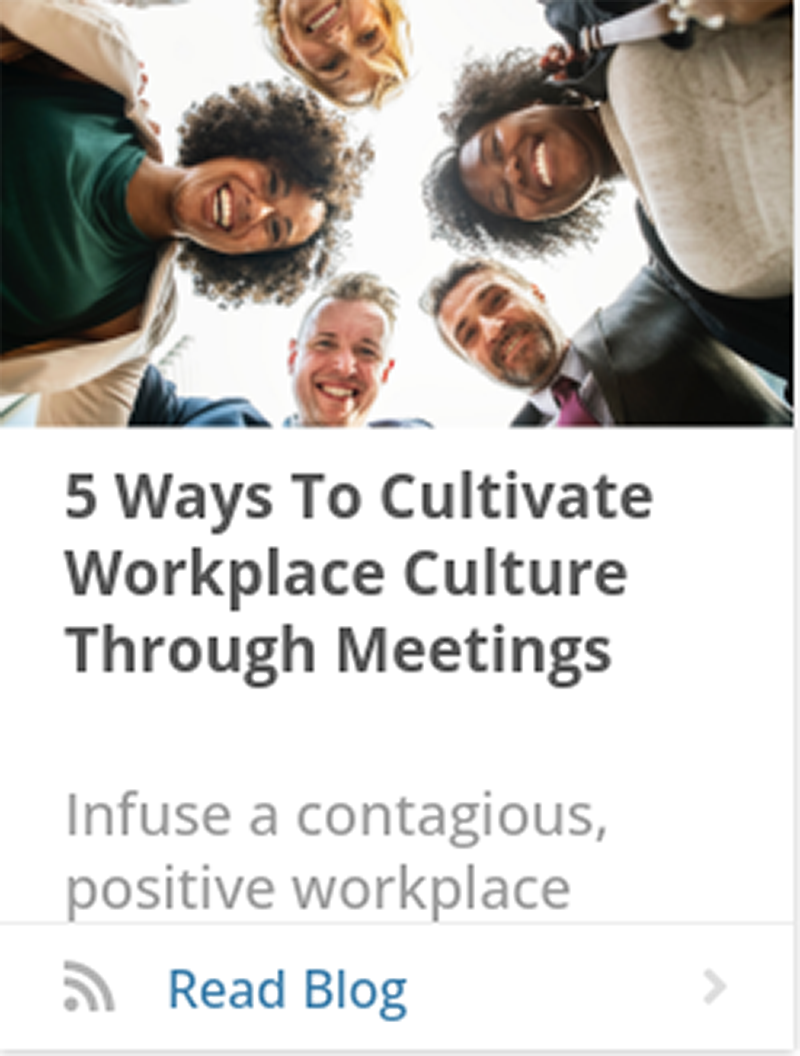As Foundant’s Manager of Client Support, I onboard about a dozen new members of our Client Services team every year. As our clients know, service is something Foundant takes very seriously. No matter who picks up the phone when you call, the person on the other end of the line needs to be informed, involved, and engaged – ready to provide friendly expertise. Making sure every new person we hire meets the high bar we’ve set for Foundant is essential, and to do that we need an onboarding path with an equally high bar. Below I’ll describe some key pieces of a successful onboarding process, and how you can take what we’ve learned to help bring people up to speed and fulfill your mission.
Preparation
One of the most impactful components of a team member’s successful onboarding comes days, months, or even years before the employee steps through your doors. It’s the processes your organization has built, the people you’ve already brought on, and the documentation you’ve established for what you do all day. Attentive onboarding won’t fix other systemic issues, but good onboarding can keep those issues from getting any worse.
So, before you bring someone on, take a step back and make sure you have the resources and infrastructure to effectively do it. If you’re a tiny family foundation, you might think this is unrealistic. You might be thinking that if you’re doing any hiring, it’s because the nice grant manager you had for 30 years left, and you need to hire now because these grant letters aren’t going to write themselves. You simply don’t have time to build out a successful onboarding path! In that case, you’re probably right, but only settle for this path once. The best time to plan and prepare to onboard someone is when you don’t need to. Because unless you’ve got some vampires on staff, even the most dedicated employee won’t be at your organization forever.
The Set Up
Have their technology and desk ready to go. This may seem like a small thing you can figure out on the fly, but I can’t overstate its importance. Prepare all technology, simple or complex, before day one. Avoid tech roadblocks for new hires. New hires face much: culture, job duties, even learning dog names. Don’t add tech woes. They’ll have more than enough things to tackle on their first day. From deciphering your company’s culture, figuring what they are actually supposed to do all day, and-at Foundant, learning dog names.
The Art of the Checklist
When I first started onboarding new people to our Client Services team, I ditched the checklist. I wanted to do things differently and thought the idea of a checklist was archaic and old-fashioned. I was wrong and I learned that quickly. A checklist, or two in my case, has become an essential tool because it allows for a degree of self driven onboarding, which is important if the new team member is going to develop a sense of ownership over their own training and development . . . not to mention helping me scale to bringing on a dozen new people every year!
I utilize two essential checklists for onboarding. The first, my “First Day Checklist,” is handed to new team members immediately upon arrival. While I champion going paperless for clients, there’s a satisfying simplicity in physically checking off boxes on a printed list. This checklist covers everything a new hire should accomplish on their very first day: logging into systems, reviewing initial training materials, and scheduling key introductory meetings.
Providing a readily completable checklist fosters an immediate sense of progress and accomplishment. New team members typically finish this list before day’s end, by design. This allows them to decompress after an information-rich day, ensuring they return refreshed and ready for continued learning the following day. It sets a positive, achievable tone from the outset of their journey with us.
After their first day, they get the “Everything Else” checklist detailing their longer learning path to full training. This checklist is their best friend for that time period, and it should include things like shadowing others and what questions to ask while doing so, completing tasks for the first time, and learning random bits of relevant knowledge. Almost every time I onboard someone I find something new to add to the checklist for next time, even if it’s as simple as, “ask someone where the best lunch places are around here.” Never let it get stale–take a look at it before every new hire to make sure it’s up to date.
The Training Materials
The checklist isn’t effective if they don’t have materials to study and absorb. It’s important for initial training, but it is most effective as a resource to refer to during onboarding. And you don’t need fancy software to present these materials — Google Drive folders are a great place to start.
And then start documenting. What does a new employee need to know about the software you use? About their email? What about your policies and maybe even a glossary? Break down the tasks the new employee will be doing into bite sized, step by step pieces. Include screenshots (the Snipping Tool that’s probably already installed on your computer is a great way to do that). Or, in certain cases, even quick videos can be helpful (I’m in love with a quick-and free video-software called Loom). Don’t spend a ton of time polishing these materials–make them direct, effective, and easy to update. New employees face an information firehose; their minds will be drenched. Make sure they know how to access the materials so they can reread any pieces that slipped through.
The First Day
Much of what they say about first impressions of people is also true of organizations. While you may have presented a great face during the interview, what a new employee experiences during their first day can’t be overstated. Leading them to their desk, tossing them the employee handbook, and bidding them adieu is not the way to engage new team members with their training and with your mission, no matter how busy you think you are.
Schedule time on your calendar. I block the entire morning off whenever I have a new person starting. Before I show them where they’ll be working, show them how to log into their computer, or teach them how to navigate the communal coffee machine, we jump in a conference room. Starting a new job can be nerve wracking. Easing them into it and building the initial relationship is key. We talk about how weekend was and basic expectations of the role, as well as answer any burning questions they have. Then it’s about setting the stage for their onboarding process. A successful onboarding process starts with an overview of how the whole process will go down, what they should focus on, who to go to as a resource, etc.
Then, at the end of this first meeting, it’s time for some whiteboarding. When I first began onboarding new employees I didn’t realize how much information I inherently absorbed over the years. “Oh, if they read the website, they totally understand what Foundant does,” I thought. That’s never the case for someone starting off, so give them a foundation for the rest of their onboarding.
Take out the dry erase marker and start talking and drawing them through your organization, your mission, and your constituents. Explain some of the history of your organization and how their role fits into the bigger picture. Let them ask questions and use them to flesh out your scribbles. By the time they leave the room, you’ve given them direction ensuring their training fits the context of the organization.
Give Them Something Useful To Do
Often, new employees will feel like a drag on others at the organization because they worry they aren’t pulling their weight. To alleviate this, instead of having the people in “training, training, training” mode for the first few days or weeks of their onboarding, find small tasks they might actually be working on that you can quickly explain and have them complete between working on building knowledge and training.
Don’t Underestimate Engagement
New hires must connect with colleagues, those served, and leadership to find their place. Dedicate time to introduce them to others at the organization, whether that’s board members, volunteers, or other employees. If you’re managing them, make sure you’re available in those first few days and weeks. It’s much easier to build trust and respect out of the gate than trying to play catch up later.
A Culture of Questioning
Of everything I’ve described so far, this is the most important. Even if you document every workflow, put everything on a checklist, and create the most successful onboarding program of all time, if you haven’t cultivated a culture of questioning at your organization, you will fail every new employee who walks through your doors.

The second piece of building a Questioning Culture is availability. Being a gracious answerer helps, but lacking time to answer questions doesn’t benefit them. You can take that idea and scale it to the rest of your organization. Who knows the information your new employee needs for successful onboarding? Are they easily accessible?
Last, cultivate this concept of asking good questions in your new employee by adding examples in your checklist. Instead of a checkbox, give them a target for seeking information, perhaps even providing the question they should ask. It shows that not only are you happy to answer their questions, it shows them an example of a good question to ask and it gets them out in the organization asking those questions and (hopefully) developing relationships with others.
Taking the time to set up a plan for your new employees takes time and focus away from immediate progress. However, with a successful onboarding plan, you’ll find your organization will be happier, more skilled, and stick around longer.
Jacob Sharp

Jacob Sharp is Foundant Technologies’ Support Delivery Manager – spending his days coaching and enabling our Client Services Support team so they can more effectively make our clients successful. With a knack for solving complicated problems for funders at various levels, it’s his goal to ensure powerful solutions for those using our grants management software. Often known as the “reporting guru” around the office, supporting members of the philanthropic community through technology has developed into a passion during his time at Foundant. Jacob spends his free time writing, reading, and escaping into the mountains around Bozeman, MT.

